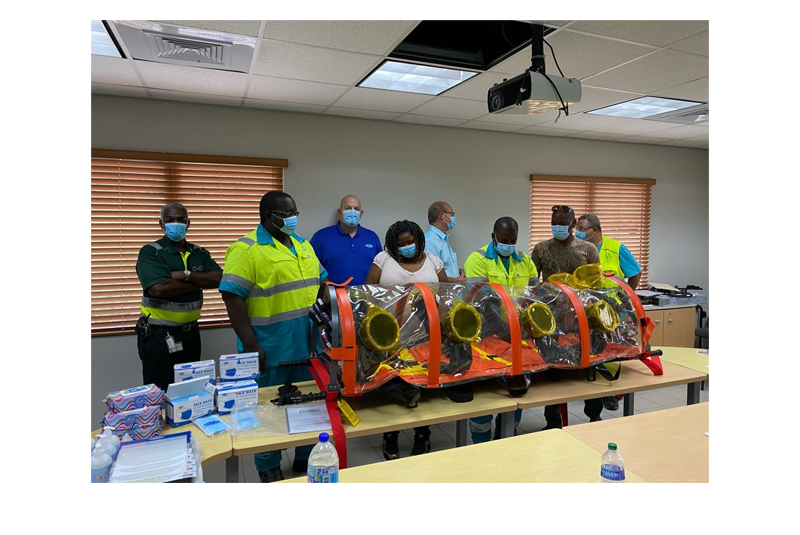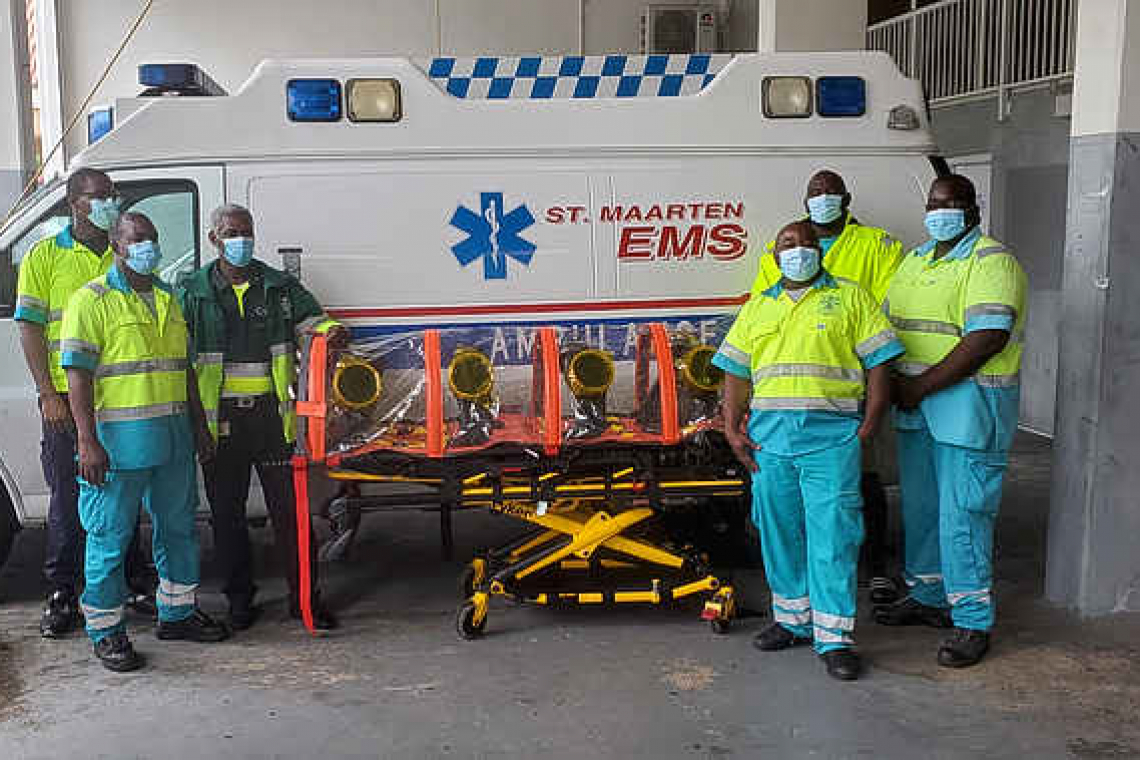The Ambulance Department’s ability to safely transport patients suspected of being contaminated by naturally occurring disease outbreaks, pandemics or industrial accidents has been strengthened with the addition of seven new patient isolation units. In photo: Workers participating in a training course taught by product manufacturers. Story on page .
PHILIPSBURG--The Ambulance Department’s ability to safely transport patients suspected of being contaminated by naturally occurring disease outbreaks, pandemics or industrial accidents has been strengthened with the addition of seven new patient isolation units.
The units were procured by the National Recovery Programme Bureau (NRPB) through the Dutch-funded St. Maarten Trust Fund.
The Emergency Recovery Project 1 (ERP1) of the Trust Fund, in addition to the repair of public buildings and private and public homes, provides for first responders’ emergency equipment and priority vehicles. Under this project the Ambulance Department will also receive four new fully equipped ambulances that are currently being procured and are expected late 2021. The department has also received communication equipment, including mobile radios and pagers.
Some members of the Ambulance Department stand with a fully assembled isolation unit.

The isolation units prevent cross-contamination between patients and the external environment. This is exceptionally timely as St. Maarten, along with many other countries globally, deals with the COVID-19 pandemic outbreak, it was stated in a press release.
The isolation units feature positive-pressure patient protection to protect an exposed patient from outside contaminants. They also feature negative pressure patient containment to enclose and isolate a suspected contaminated patient. When not in use the units are stored in a carry bag and can be unfolded, attached to a litter, set up, and loaded with a patient by two trained ambulance personnel in about 15 minutes.
A two-day training for the Ambulance Department personnel was also provided by the manufacturers of the units.
Ambulance Department head Cylred Richardson, commenting on the new equipment and training, said, “The staff was engaged and clearly eager to train with the new equipment. We have seen the need for equipment like this for some time. I am appreciative that through the Trust Fund we now have these units in-house. This adds another layer of protection for our front-line staff members and serves as an enhancement in the safety for our community.”
“I would like to thank the NRPB ERP1 Team and the Ambulance Department for their diligence in procuring this equipment. I’ve heard persons query what really are we at the NRPB busy with? Oftentimes persons are not fully aware of the enormous amount of man hours that are required to finalise these types of purchases.
“Our frontline professionals are now further equipped with some of the necessary tools, in addition to the required specified training, to properly serve the community and visitors of St. Maarten in the never-ending efforts to protect us in times of emergencies or disaster,” NRPB Director Claret Connor said.







